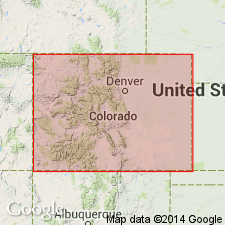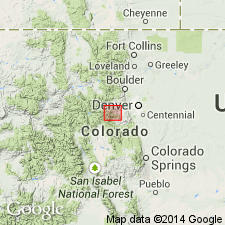
- Usage in publication:
-
- Berthoud Plutonic Suite*
- Modifications:
-
- Named
- Dominant lithology:
-
- Granite
- AAPG geologic province:
-
- Southern Rocky Mountain region
- Midcontinent region
- Northern Rocky Mountain region
Summary:
Is a Middle Proterozoic (emplaced about 1,400 m.y. age) lithodemic unit named for Berthoud Pass; occurs in the Southern Rocky Mountain region and the Northern Rocky Mountain region. Rocks are mesozonal and anorogenic in habit. They are discordant in part, unfoliated or locally foliated, and among granitoid facies, mainly quartz monzonitic to granitic in composition. Divided into ten formally named units: Silver Plume Granite or Quartz Monzonite; Sherman Granite; Cripple Creek Granite or Quartz Monzonite; San Isabel Granite; St. Kevin Granite; Vernal Mesa Quartz Monzonite; Curecanti Quartz Monzonite; Eolus Granite; Trimble Granite; Electra Lake Gabbro; and the informal rock of Mount Ethel pluton, and other unnamed granitic rocks. Occurs in the subsurface in southern half of CO and are part of granitic terrane that extends into bordering NM, OK, and KS, in the Midcontinent region.
Source: GNU records (USGS DDS-6; Denver GNULEX).

- Usage in publication:
-
- Berthoud Plutonic Suite*
- Modifications:
-
- Revised
- AAPG geologic province:
-
- Southern Rocky Mountain region
Summary:
Mount Evans batholith is exposed over a 225 sq km area in the Front Range of CO in the Southern Rocky Mountain region. The batholith is composed of weakly to strongly foliated, medium- to coarse-grained gray monzogranite and granodiorite, and includes several small plutons called granite of Rosalie Peak. The Mount Evans characterized by foliation caused by igneous flow structure. It was previously considered to be a part--one of the unnamed granitic bodies--of the Routt Plutonic Suite of 1.7 Ga. New U-Pb zircon ages on four samples from the batholith and from the granite of Rosalie Peak indicate an emplacement age of 1442 +/-2 Ma. It is chemically different from most of the other 1.4 Ga granites. Different chemistry due to different source areas, or it may have been derived from different depths. Mount Evans and the granite of Rosalie Peak are reassigned to the 1.4 Ga Berthoud Plutonic Suite as one of the unnamed granitic bodies.
Source: GNU records (USGS DDS-6; Denver GNULEX).
For more information, please contact Nancy Stamm, Geologic Names Committee Secretary.
Asterisk (*) indicates published by U.S. Geological Survey authors.
"No current usage" (†) implies that a name has been abandoned or has fallen into disuse. Former usage and, if known, replacement name given in parentheses ( ).
Slash (/) indicates name conflicts with nomenclatural guidelines (CSN, 1933; ACSN, 1961, 1970; NACSN, 1983, 2005, 2021). May be explained within brackets ([ ]).

